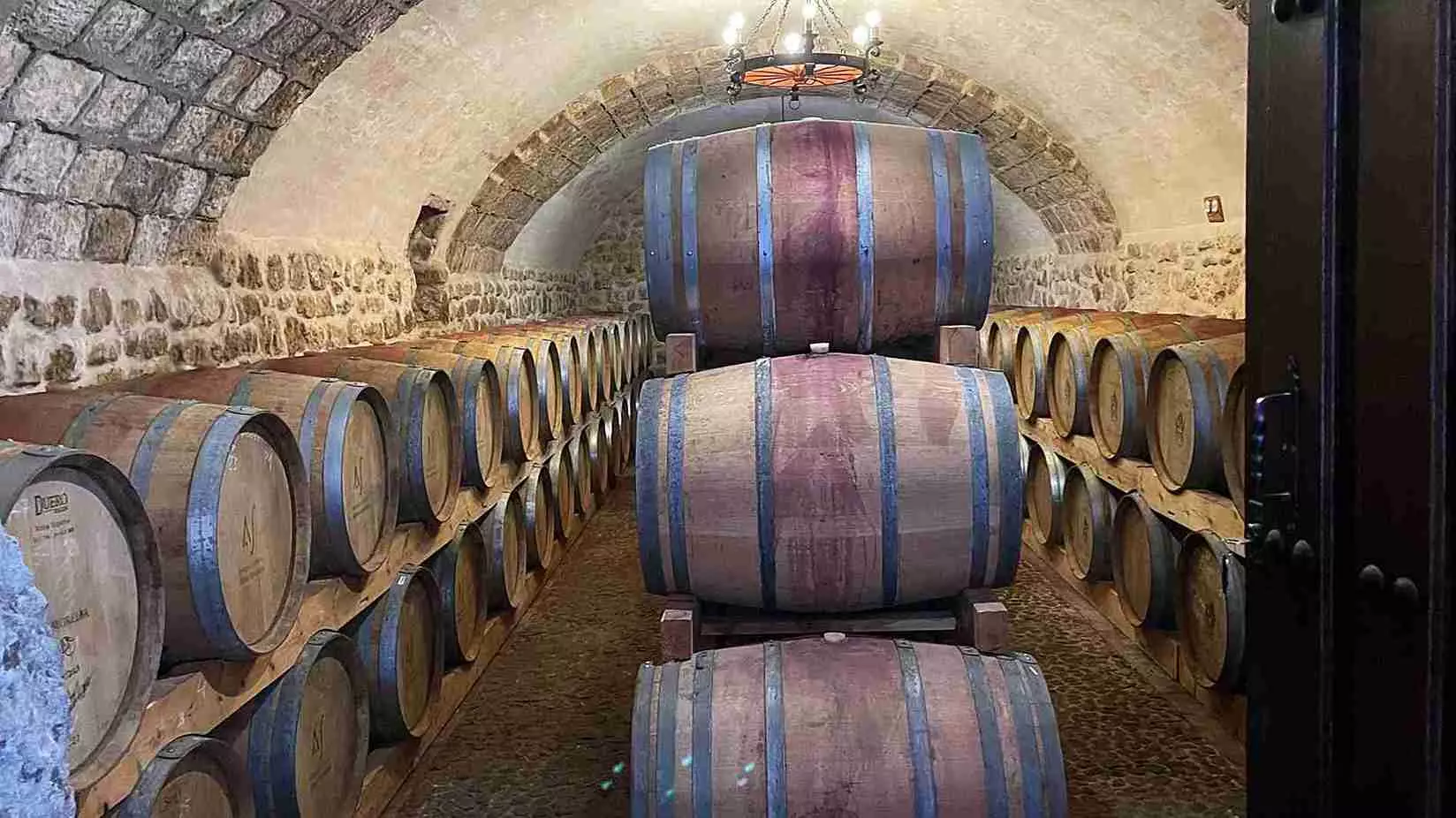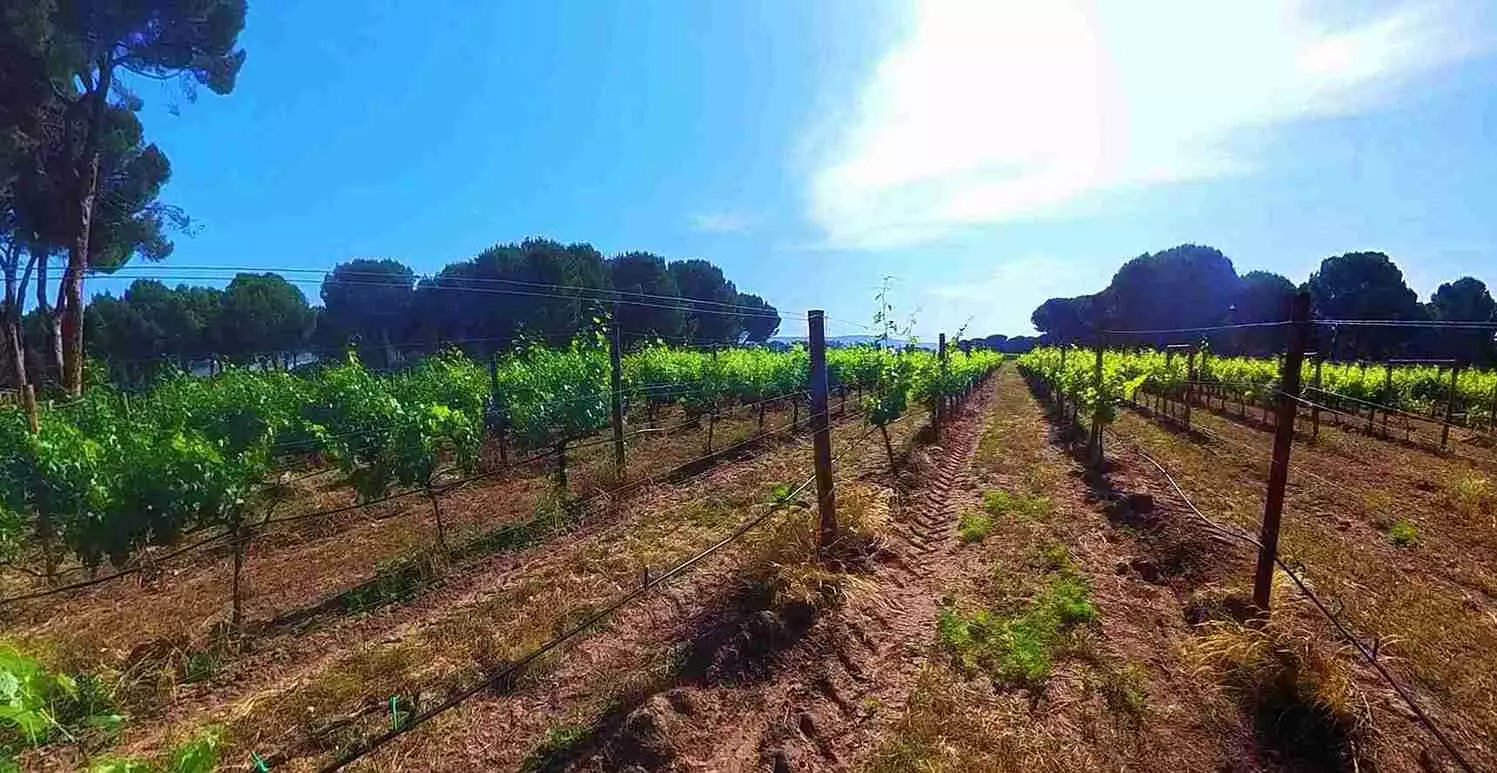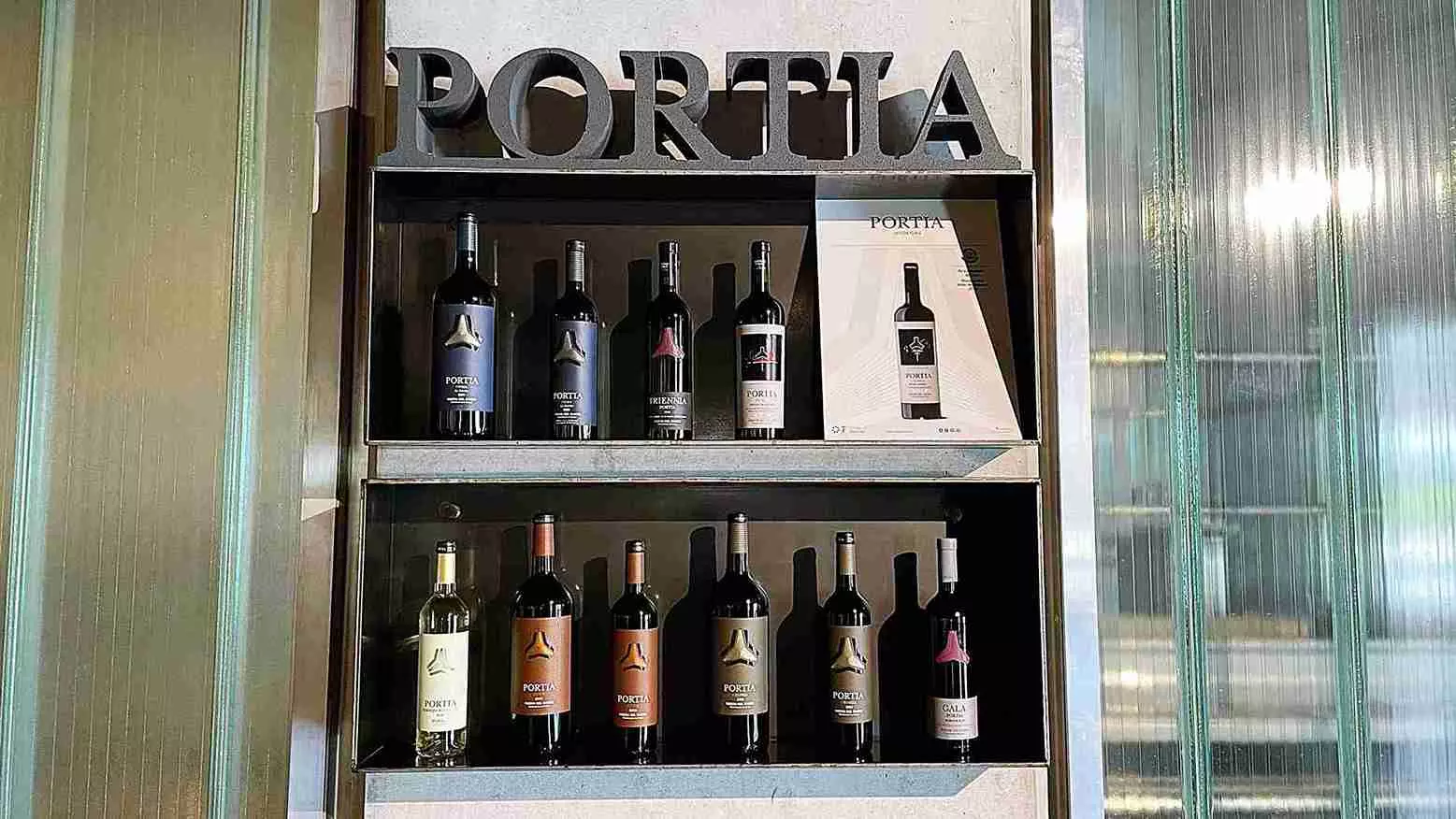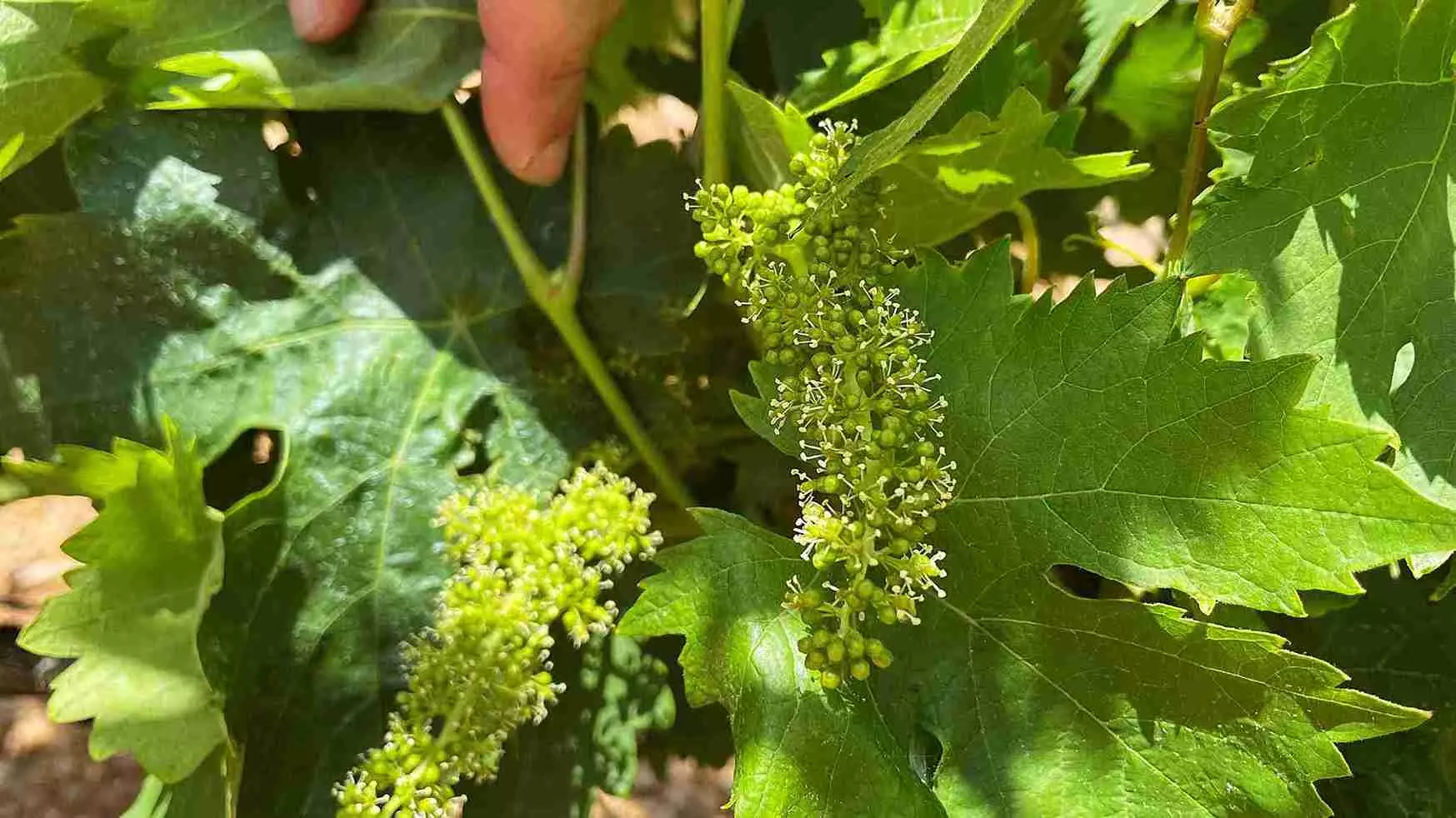
- Home
- India
- World
- Premium
- THE FEDERAL SPECIAL
- Analysis
- States
- Perspective
- Videos
- Sports
- Education
- Entertainment
- Elections
- Features
- Health
- Business
- Series
- In memoriam: Sheikh Mujibur Rahman
- Bishnoi's Men
- NEET TANGLE
- Economy Series
- Earth Day
- Kashmir’s Frozen Turbulence
- India@75
- The legend of Ramjanmabhoomi
- Liberalisation@30
- How to tame a dragon
- Celebrating biodiversity
- Farm Matters
- 50 days of solitude
- Bringing Migrants Home
- Budget 2020
- Jharkhand Votes
- The Federal Investigates
- The Federal Impact
- Vanishing Sand
- Gandhi @ 150
- Andhra Today
- Field report
- Operation Gulmarg
- Pandemic @1 Mn in India
- The Federal Year-End
- The Zero Year
- Science
- Brand studio
- Newsletter
- Elections 2024
- Events
How Tempranillo travelled from Spanish cellars to Indian vineyards

Most tourists traipsing through Castilla y León's cobblestone streets never infer what lies beneath their feet. While the province draws visitors with its medieval architecture and storied past, conceivably its greatest glory stays obscured underground—a vast grid of ancient wine cellars that tunnel deep into the earth. Duck into any tapas bar around the old town squares, and there's a...
Most tourists traipsing through Castilla y León's cobblestone streets never infer what lies beneath their feet. While the province draws visitors with its medieval architecture and storied past, conceivably its greatest glory stays obscured underground—a vast grid of ancient wine cellars that tunnel deep into the earth. Duck into any tapas bar around the old town squares, and there's a good chance you'll spot a wooden trapdoor near the bar. These entrances lead into a veritable labyrinth of clay and limestone—with some of these subterranean wineries plunging forty feet beneath the quotidian bustle of street level. For over a thousand years, the vintners of this region have used these providentially refrigerated grottoes with an admirably consistent 11 to 13 degrees Celsius—a thermal constancy perfect for ageing wine.

Underground cellars of Bodegas Y Vinedos Alfredo Santamaria.
Amid these dim, oak-scented tunnels, Spain’s celebrated Tempranillo grape came into its own, reaching a pinnacle of character and depth. The tradition of shared cellars reflects the egalitarian spirit of Spanish winemaking, where modest growers carved communal caves, uniting their craft to rival the finest vineyards. “These cellars are far more than mere repositories of wine,” says Cristina Lopez Nez at Bodega Histórica Don Carlos. “The indigenous yeasts that live in these limestone walls cannot be replicated in modern facilities—they're part of our terroir.”
Towards Northeast of Valladolid, the Cigales wine route stretches along the Pisuerga River and is home to hundreds of historic underground cellars, some more than 10 meters deep. After receiving Denominación de Origen status in 1991, Cigales has since become popular for its refined rosé wines—locally called clarets—largely made from Tempranillo. “The underground cellars in this area—and especially ours—date back more than 400 years,” shares Pablo Santamaría, owner of Bodegas Alfredo Santamaría, Valladolid. When this building was restored, they preserved all the original wood and respected the traditional styles. “Our winery is deeply rooted in wine tourism. Less than 20 years ago, we opened a small rural hotel, built in the same traditional style. So in addition to making wine, we’re highly specialised in wine tourism,” shares Pablo Santamaría, owner of Bodegas Alfredo Santamaría, Valladolid.
“Historically, Cigales specialized in claret's and rosés made in underground cellars shared by small wine-makers. The region's unique approach to Tempranillo rosé involves brief skin contact that extracts just enough colour and tannin to create wines of remarkable elegance and food-pairing versatility,” shares Rincón Blas, one of the subterranean winery owners in Duena. The region's unique approach involves minimal skin contact that extracts just enough colour and tannin to create wines of remarkable elegance. However, maintaining these historical treasures presents significant challenges.
“The underground cellars require constant attention,” says Ricardo Crespo, owner of EME Bodegas in Valladolid. “We battle against humidity fluctuations, structural integrity issues, and the enormous cost of restoration. Many cellars have been abandoned because owners cannot afford the specialized engineering required to preserve them safely while meeting modern health regulations.”
In Ribera del Duero, Tempranillo finds its soul
Ribera del Duero, Spain’s most esteemed region for Tempranillo, stretches 115 kilometres from Soria to Valladolid, across 19 municipalities and over 280 wineries. With vineyards situated between 750m and 900m in elevation, the area experiences extreme diurnal shifts—up to 20°C between day and night—leading to wines with excellent structure and concentration. The soils— an opus sectile of limestone, clay, and sand—provide ideal drainage while retaining enough moisture to sustain vines during the scorching summers. This combination produces some of the world’s most celebrated wines like Dominio de Pingus; a wine made from un-grafted vines that are over 80 years old. Made by Peter Sisseck, Pingus typically fetches more than €1,000 a bottle. Aged for 18 months in elegant French oak, the 2004 vintage displays a complex nose of black cherry, graphite, and delicate spice.

Tempranillo vineyards of Quintanilla de Onésimo, Valladolid, Spain.
Jesus Yuste, a Viticulture Researcher at Junta de Castilla y León, notes that, “The average growing season temperatures are projected to warm by 2.1°C by 2050 in Europe.” While the observed warming of the late 20th century appears to have been mostly beneficial for high quality wine production, the Jones et al. analysis suggests that the impacts of future climate change will be highly heterogeneous across varieties and regions. He also observes that the Tempranillo's phenological cycle has shifted dramatically in the past two decades. “We're seeing bud break occurring 10-15 days earlier than historical averages, and harvest dates have advanced by nearly three weeks in some vintages.”
This acceleration compresses the ripening period and can lead to imbalanced wines. Recent studies have warned that as much as 90% of the traditional wine regions in the Spanish lowlands and on the coast could vanish by the end of the century due to a combination of severe droughts and more frequent heat waves. To combat the trend, Spanish vintners are working on plantings at higher elevations, on altered canopy management, and are even testing heat-resistant rootstocks.
Tempranillo takes root in India
In a surprising twist, the grape has taken root in an unexpected new home—India. Leading this shift, Grover Zampa became the first Indian winery to cultivate Tempranillo, launching Chêne—India’s first Tempranillo blend in 2013. Developed in collaboration with Bordeaux’s Michel Rolland, this venture symbolises a bold experiment in adaptation. The technological differences between Spanish and Indian Tempranillo production are striking. While Spanish producers integrate historical underground cellars with modern temperature-controlled systems, Indian winemakers rely entirely on contemporary technology. However, in contrast to Spain’s centuries-old familiarity with Tempranillo’s needs, Indian vintners face the unique challenge of monsoonal rains and humid summers.

Tempranillo wines by Bodega Portia.
As Head Winemaker in Maharashtra, Abhijit Shendage has successfully managed grape-to-bottle operations, incorporating cutting-edge winemaking technologies such as HD Optical Sorters, amphora, and concrete fermentation and ageing. The skilled team at Grover Zampa adopts sustainable practices, coupled with selective hand harvesting and applies up-to-date viticulture and winemaking techniques that capture the essence of the fruit and retain its distinctive style. The harvest timing alone illustrates the dramatic difference between the two regions. In Spain, Tempranillo harvest typically occurs in late August or early September, while in India, the harvest is completed by the end of March.
Shendage notes, “Tempranillo in India is an interesting subject to explore, particularly when you consider the dynamics of both terroir and market preferences. India’s wine industry is relatively young, and while it has made great strides in the last two decades, it's still evolving, particularly in terms of grape variety selection, winemaking techniques, and consumer preferences.” Talking about the terroir influence, he shares that the climate and soil conditions in India are vastly different from those of Spain, especially regions like Ribera del Duero, where Tempranillo is known to thrive. “Ribera del Duero benefits from a continental climate—cold winters, hot summers, and significant diurnal temperature variations—which helps Tempranillo develop the depth and complexity required for ageing. India, on the other hand, generally experiences warmer climates, particularly in regions like Nashik and parts of Karnataka, with more consistent temperatures throughout the year.”
The Indian interpretation of Tempranillo tends toward fruit-forward profiles with softer tannins than their Spanish counterparts. “While India lacks the natural limestone caverns of Spain, winemakers are adapting innovatively through altitude, amphorae, architecture, and controlled wild fermentation. These methods reflect a growing desire to express Indian terroir authentically, while mitigating climatic extremes,” shares Shendage. This stylistic difference reflects not just terroir variation but also consumer preferences in the Indian market, where wine consumption is developing and approachable styles find greater acceptance.

Tempranillo grapes
Grover Zampa currently produces 3 lines of wine; the Art Collection, La Réserve and the Vijay Amritraj Reserve Collection. The La Réserve blend, which incorporates Tempranillo with Shiraz, creates an Indian expression that balances the grape's Spanish heritage with local terroir characteristics. Among total wine consumption in India, imported wine accounts for more than 25 percent while the rest is produced locally. This creates an interesting situation where Indian consumers most often encounter Spanish Tempranillo before trying the domestic version.
As a final thought, Shendage observes, “While I don’t foresee Indian Tempranillo reaching the same level of age-worthy complexity as those from Ribera del Duero in the immediate future, I do think there's potential for India to produce more structured and complex versions over time.” He adds, “It will be interesting to see how terroir, winemaking techniques, and market preferences evolve, especially as India's wine culture becomes more sophisticated. The wines may always retain a certain fruit-forward, accessible character, but with the right focus on acidity and tannin management, a more complex and age-worthy style could emerge, particularly from premium wine estates.”
As Spain plays with altitude and learns to live with the soil’s response to the changing climate, and India calls in new technology to combat the extreme heat, a muted negotiation of information exchange is happening—one built on curiosity, respect and the shared love of the vine. Grover Zampa in Nandi Hills leverages altitude to cultivate Syrah and Viognier with elegance and freshness, benefiting from natural diurnal shifts. While they don’t have limestone caves, vineyards situated at higher altitudes (700–1000+ meters) enjoy cooler nighttime temperatures and slower grape ripening, which helps preserve acidity and complexity, somewhat akin to what Spanish caves do during fermentation and ageing. Tempranillo may have been born in the cool, cavernous cellars of Spain, but in India, it’s learning to dance in the sun—and it’s not missing a beat.
